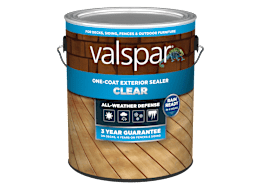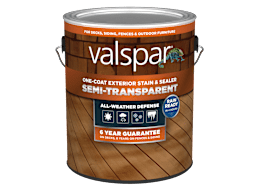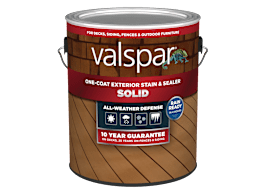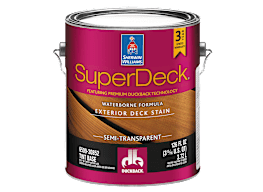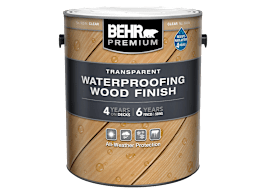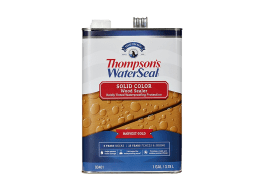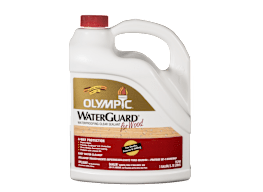How to Get the Most Out of Clear and Semi-Transparent Wood Stains
Achieve the look you want for your deck with advice from CR’s experts
When you shop through retailer links on our site, we may earn affiliate commissions. 100% of the fees we collect are used to support our nonprofit mission. Learn more.

Many people like using a semi-transparent wood stain better than a solid one—even if it might not last as long—because it allows for more of the natural wood grain to come through. (Solid stain covers like paint.) If you have a deck made of a tropical hardwood, like teak or mahogany, you might even opt for a clear sealer.
But these stains are not as easy to use as color stains. “It’s all in how you apply it,” says Rico de Paz, who runs Consumer Reports’ tests of stains and paints. “If you want a clear or semi-transparent stain to last, you’ll need to apply a very thin coat.” And of course, you'll want to start with a high-performing wood stain.
1. First, Sand It Down
If your deck has already been stained and is peeling or flaking, or pieces of wood are cracking and are coming up off the surface, you need to prep it before staining by cleaning and sanding it. “The wood grain comes up because the water has already soaked into the wood, which means your stain isn’t doing its job of protecting your deck,” says de Paz.
2. Think Thin
Using a synthetic brush or a roller with a very short nap, apply as thin a layer of stain as you can. It should look almost dry as you’re applying it. A thicker coat could bubble and look messy. Allow time for the stain to soak into the wood.
3. Watch the Direction of Your Brush
When you apply the clear or semi-transparent stain, first run the brush or roller across the grain of the board as quick as possible. This will help the stain get into the small grooves of the wood. Then immediately brush following the grain while the stain is wet for an even look.
4. Skip a Second Coat
With a solid stain, CR typically recommends putting on two coats because these are more like a regular paint and will dry one on top of the other. But with a clear or semi-transparent wood stain, a second coat will just sit on the surface of the first coat. “It might start peeling when the sun hits it, making it look like your deck got a sunburn," says de Paz. "And nobody likes the look of peeling skin.”
5. Keep on Top of Reapplying
A clear sealer will usually need to be applied every year; a semi-transparent one, every two to three years. “How often you should reapply depends on your climate,” says de Paz. For example, if you live in Arizona, where the hot sun could cause stains to fade or crack, you may need to reapply more often.
There is no need to resand as long as there's no peeling or wood splinters coming up. If there are, you will need to sand down those parts before applying a new—thin—coat of stain.
Shopping for a Stain?
To see how well different types of wood stains perform, check CR's wood stain ratings. In addition to individual ratings for each of our test categories, our Features & Specs section will tell you whether a stain is good at resisting cracking, fading, dirt, and mildew.
In CR’s tests, we find that, generally, clear and semi-transparent wood stains don’t hold up over the years as well as solid wood stains, and many rate only a Good or Fair for their Overall Score because of this. But there is one semi-transparent stain that’s among the best stains we test—even color ones—and we've highlighted it below.


















